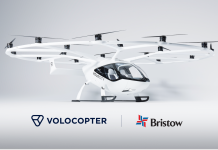Kick back with a 1950s US Army training film on how to fly a Sikorsky H-19. What better way to spend 25 minutes on a spring Friday afternoon?
The radial engine beast was a mainstay of military and civil rotary wing aviation in the 1950s and ‘60s. It was developed into the H-34 and the turbine-powered Westland Wessex, as used by the Royal Australian Navy from the 1960s to the ‘80s.
The H-19 carried its two pilots and ten passengers into the air with thrust from a 22-litre, 600 hp, Pratt & Whitney R-1340 radial engine. Cruising speed was an unhurried 74 knots, (36 knots slower than a Robinson R44), but the H-19, named the Chickasaw in the US Army’s scheme of native American tribal names for its rotary-wing fleet, was among the first practical single-rotor utility helicopters.
The safety message in this, admittedly leisurely, 25-minute production is that all pilots (and engineers) would do well to be as thorough in their inspections and checklists as the starched, crew-cut and slightly self-conscious army pilot in the video. Radial engine helicopters are history, but the fundamentals of airmanship don’t—and shouldn’t—change.





An interesting view of what is what like back in the day, however appears very basic.
Only one thing has me curious…
Why apply the rotor brake with 1 blade in the forward position?
It’s called “Dressing the blades” Its making the chopper look neat. . My CFI taught me that. He was ex millitary and a bit old school when it came to airmanship. Like a soldier making his bed.. Its the little things that show self dicipline and pride in your work… A good attribute in a pilot.
However it ensures no blade is over the engine exhaust when starting and therefore prevents any possible heat damage to the main rotor blades
Interesting fuel drain procedure.